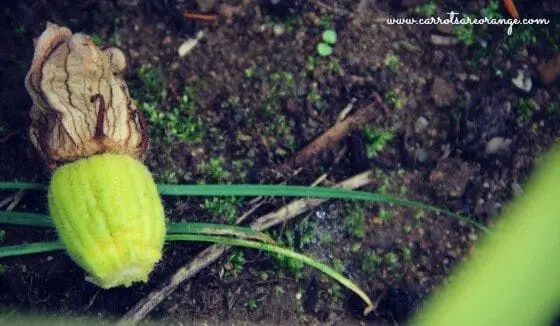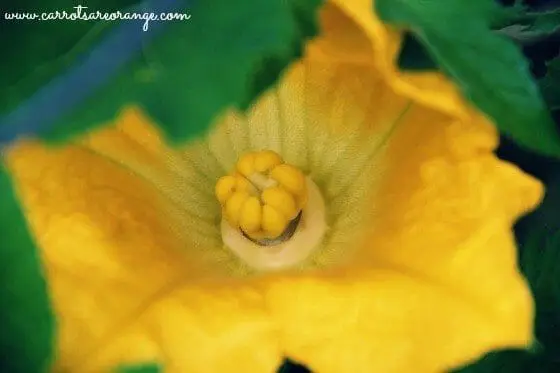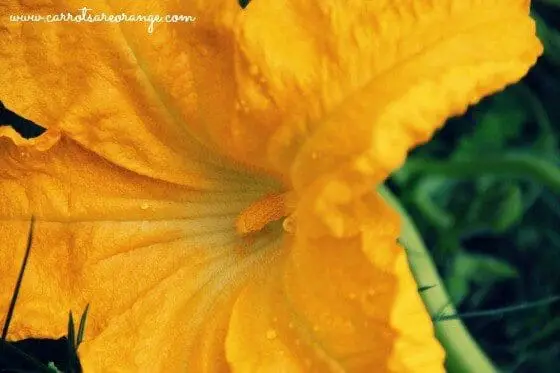We’ve all seen the various life cycle work and wonderful activities. I am a big believer in showing a child the life cycle of plants and animals. We’ve talked a lot about the Life cycle of the Pumpkin but, for me, there was always something missing. Recently I found the key to unlocking the missing piece.

If you think in terms of a year, plant a seed; if in terms of ten years, plant trees; if in terms of 100 years, teach the people.
Confucius

In my quest to understand why our pumpkins were shriveling up after only a few days, I did some research. One internet site explained that there are male and female flowers, which I knew but had never really investigated at any length.
It went on to explain that the female flower “drops” the seed and if that seed isn’t fertilized then the seed shrivels up. Makes sense.

So this morning I went out to check out these flowers. As it turns out the difference between the male and female flowers is quite obvious.
When I noticed a honeybee buzzing around the garden, I immediately became excited at the prospects. I watched this honeybee move from the male flower to the female flower with great hope for our garden.

What a great way to learn about the birds and the bees! I snapped photos and can’t wait to show them to my boys. Better yet, I can’t wait to get them out into the garden.
I love the fact that they are not afraid of bees. Instead, they are curious, calm, and respectful of the bees. They don’t disturb them and understand that if they act this way then the bees will not sting them.
By exposing my boys to this part of the reproductive cycle of plants, we are able to talk about our bodies and other animals and plants.
